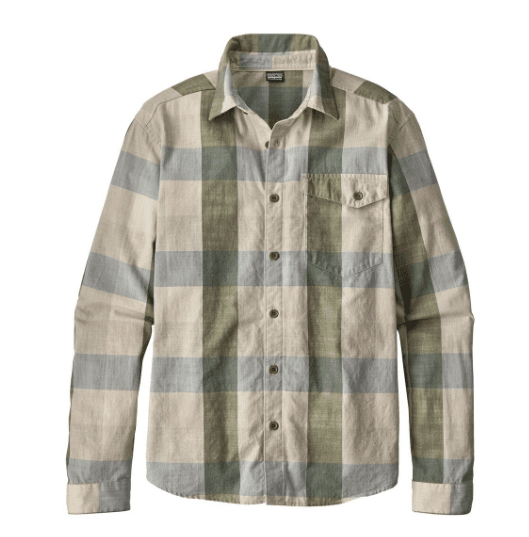
Using red onion skins to dye Easter eggs is a longstanding homemakers trick. Some may even have dyed upholstery or clothing with galls, bulbous growths that can be found on oak trees throughout California.
The venerable outdoor clothing company Patagonia is taking these natural dying techniques even further with its Clean Color Collection for both men and women. If you’re looking for bright primary, secondary or neon colors, don’t bother with this product line. The tones are muted, soft and earthy – and why wouldn’t they be? After all, they do come directly from natural sources.
Sage- and tan-hued tones result from the use of mulberry and the end result of mulberry leaves, silkworm excrement. Pinks are the result of both prickly pear and pomegranate. Citrus peels, palmetto leaves and cochineal insects (which was used in some Starbucks products until vegetarians pitched a fit) are amongst the other ingredients Patagonia touts for this collection. For the darker shirts and shorts, Patagonia uses other sources of bio-waste like agricultural residue.
For the most part, the collection is simple, with patterns limited to color-blocking and a few plaid designs. Organic cotton is the preferred fiber, with a small portion of the clothing line comprised of polyester derived from alternative sources.
Patagonia is sourcing the colors from California-based Swisstex, a company that says its ethos does not stop with its dyes, which are supposedly more natural and sustainable alternatives to chemically-derived dyes. Swisstex also insists that it minimizes its water and carbon footprint across its entire operations.
While critics of the global apparel industry tend to focus on the copious amounts of fiber consumed to meet the growing demand for cheap clothing, the textile dyeing process marks the fashion industry with a huge environmental footprint. For years, many dyeing factories have followed wasteful water consumption practices, with dye-to-water ratios of 1-to-30 not uncommon. In countries such as India and China, these dyeing facilities are not only notorious for exhausting local water supplies, but have also been accused of dumping their wastewater products into local streams, rivers and ponds.
Patagonia’s Clean Color Collection is just the latest example of how the company stands out from its peers in the outdoor clothing and gear industry. For example, Patagonia has long encouraged its customers to repair instead of quickly replacing its clothes. The company has experimented with alternatives to neoprene, such as natural rubber, for its wetsuits. And while other retailers were reluctant to take a stand over the recent public lands controversy, Patagonia withdrew from the annual Outdoor Retailer trade show in Utah – which nudged that organization to leave the state entirely. The company is now threatening to sue the Donald Trump administration over its latest executive order relating to public lands.
To date, Patagonia has not made it clear whether this Clean Color Collection is a one-off product launch or will become a regular product offering. At the moment, the tanks, shirts, hoodies and hiking pants for both men and women range in price from $39 to $119.
Image credit: Patagonia

Leon Kaye has written for 3p since 2010 and become executive editor in 2018. His previous work includes writing for the Guardian as well as other online and print publications. In addition, he's worked in sales executive roles within technology and financial research companies, as well as for a public relations firm, for which he consulted with one of the globe’s leading sustainability initiatives. Currently living in Central California, he’s traveled to 70-plus countries and has lived and worked in South Korea, the United Arab Emirates and Uruguay.
Leon’s an alum of Fresno State, the University of Maryland, Baltimore County and the University of Southern California's Marshall Business School. He enjoys traveling abroad as well as exploring California’s Central Coast and the Sierra Nevadas.














